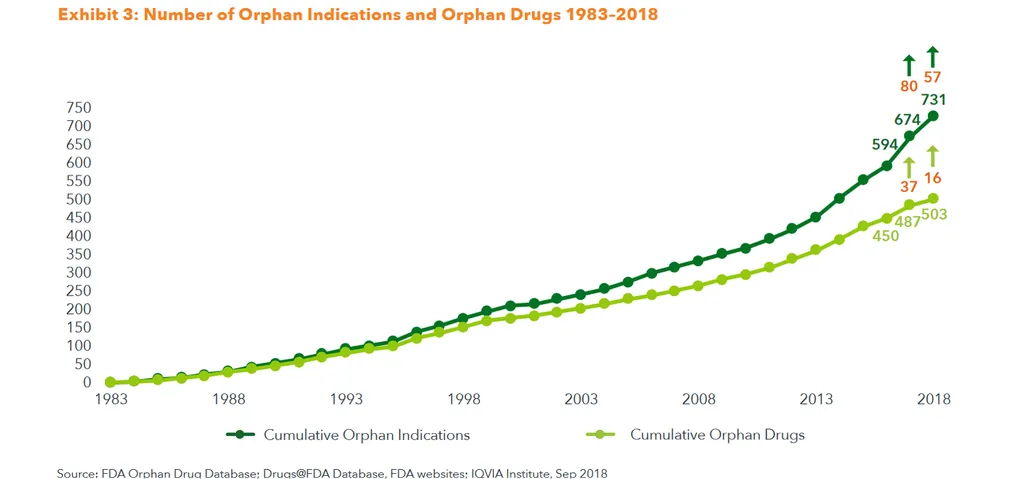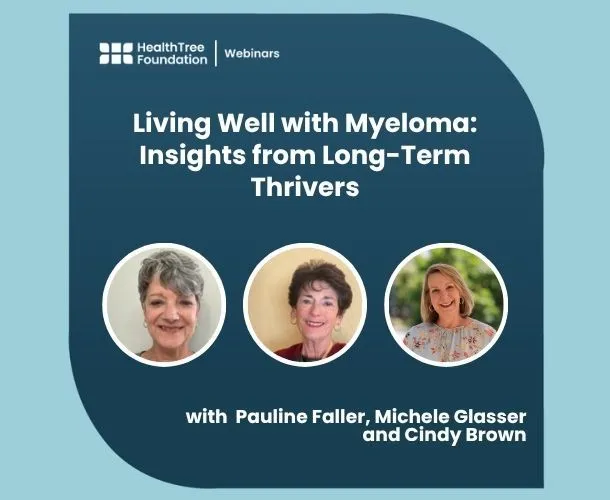Miracles in Myeloma Development: Rare Success for a Rare Disease

In the United States the NIH (National Institute of Health) defines a rare or orphan disease as one which has fewer than 200,000 people. There is an estimated 6000 to 7000 rare diseases. I recently read a report about the success of the 1983 Rare Disease Act. It has been instrumental in bringing new drugs to market for Orphan Diseases. Prior to the law there had been limited to no success, and that is why this act was put in place to provide financial incentives for drug companies to pursue orphan drugs. Their success is obvious in the following graph.

Approvals of new orphan drugs went up from near zero each year to an average of 25 each year for the last 10 years. So in the last 10 years there have been around 253 new drugs approved for rare diseases in the US. This is exceptional progress and improvement, and can be explained by the financial incentives and the reduced time for approval of the rare disease designation by the FDA. But if you use the lower estimate of 6000 rare cancers, the average new drug approval per rare cancer is .04 new drugs per rare cancer. Yes, that is just 4 new drugs for every 100 rare cancers. As you know each new drug has improved myeloma life expectancy, and in the last 10 years we have had 7 new drugs approved for myeloma! Myeloma has had 175 times the average drug approvals for rare diseases in the last 10 years.
In addition, we know that every new drug provides a longer life expectancy. In the last 10 years the National Cancer Institutes SEER data base has shown life expectancy for myeloma going up from 3 years to now 6 years or a 100% improvement. This is thanks to a dedicated and talented group of researchers, myeloma specialists, myeloma organizations (IMF, MMRF, Myeloma Crowd, LLS), FDA, NCI, advocates, care givers, drug companies big and small, and care teams. I wish someone could bottle this secret sauce and make it available to the other 5999 rare diseases! We have been blessed with an abundance in new drug development.
One thing for certain is that if the life expectancy goes up by 100%, so does the cost to keep this chronic disease in check and the need for the next new drug until a cure is developed. Will we get the next new drug if there is little if any financial incentive for the drug manufactures? Based on the results of the Orphan Drug Act, incentives provide improved drug supply!
For now let's just celebrate our Myeloma Development Miracles, and hope and pray it continues until we find a cure, and quickly!
Good luck and God Bless your Cancer Journey
In the United States the NIH (National Institute of Health) defines a rare or orphan disease as one which has fewer than 200,000 people. There is an estimated 6000 to 7000 rare diseases. I recently read a report about the success of the 1983 Rare Disease Act. It has been instrumental in bringing new drugs to market for Orphan Diseases. Prior to the law there had been limited to no success, and that is why this act was put in place to provide financial incentives for drug companies to pursue orphan drugs. Their success is obvious in the following graph.

Approvals of new orphan drugs went up from near zero each year to an average of 25 each year for the last 10 years. So in the last 10 years there have been around 253 new drugs approved for rare diseases in the US. This is exceptional progress and improvement, and can be explained by the financial incentives and the reduced time for approval of the rare disease designation by the FDA. But if you use the lower estimate of 6000 rare cancers, the average new drug approval per rare cancer is .04 new drugs per rare cancer. Yes, that is just 4 new drugs for every 100 rare cancers. As you know each new drug has improved myeloma life expectancy, and in the last 10 years we have had 7 new drugs approved for myeloma! Myeloma has had 175 times the average drug approvals for rare diseases in the last 10 years.
In addition, we know that every new drug provides a longer life expectancy. In the last 10 years the National Cancer Institutes SEER data base has shown life expectancy for myeloma going up from 3 years to now 6 years or a 100% improvement. This is thanks to a dedicated and talented group of researchers, myeloma specialists, myeloma organizations (IMF, MMRF, Myeloma Crowd, LLS), FDA, NCI, advocates, care givers, drug companies big and small, and care teams. I wish someone could bottle this secret sauce and make it available to the other 5999 rare diseases! We have been blessed with an abundance in new drug development.
One thing for certain is that if the life expectancy goes up by 100%, so does the cost to keep this chronic disease in check and the need for the next new drug until a cure is developed. Will we get the next new drug if there is little if any financial incentive for the drug manufactures? Based on the results of the Orphan Drug Act, incentives provide improved drug supply!
For now let's just celebrate our Myeloma Development Miracles, and hope and pray it continues until we find a cure, and quickly!
Good luck and God Bless your Cancer Journey

about the author
Gary Petersen
Gary is a myeloma survivor and patient advocate. His work centers around helping patients live longer by helping them to find facilities who are beating the average survival statistics. You can find Gary's site at www.myelomasurvival.com and follow him on Twitter at @grpetersen1
More on Navigating Your Health
Trending Articles




Get the Latest Multiple Myeloma Updates, Delivered to You.
By subscribing to the HealthTree newsletter, you'll receive the latest research, treatment updates, and expert insights to help you navigate your health.
Together we care.
Together we cure.
3x Faster.













